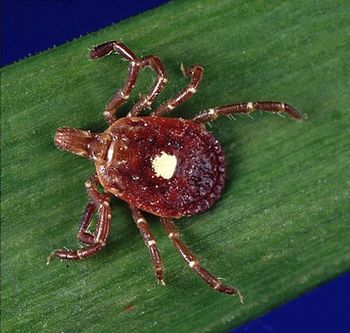
New Aggressive Tick Species Is Spreading Through the United States
A species of tick that is native to Australia, New Zealand, and eastern Asia, has been springing up in several US states this summer.
A new tick species that is native to Australia, New Zealand, and eastern Asia, has been springing up in several US states this summer, prompting health officials to warn the general public to take the proper protective measures against potential bites.
The tick (Haemaphysalis longicornis), referred to as the “
However, New Jersey is not the only state to have identified the tick—it has now been reported in 8 US states.
“This tick has been associated with bacterial and viral tick-borne disease in other parts of the world,” Miguella Mark-Carew, director of epidemiology and prevention services for the West Virginia Department of Health and Human Resources, Bureau for Public Health, stressed in a
The US Departments of Agriculture (USDA) confirmed the presence of the exotic tick in
Pennsylvania reported the tick in Centre County’s Potter Township on an adult male wild white-tailed deer that had been euthanized on July 10 by the Game Commission as it was exhibiting signs consistent with chronic wasting disease. The Southeastern Cooperative Wildlife Disease Study in Athens, Georgia, collected the ticks from the deer, and NVSL confirmed that they were longhorned ticks.
Most recently, the
To date, there are no known direct links between the cases seen in the 8 states.
The USDA has warned that the tick poses a serious threat to livestock because heavy infestations can result in stunted growth, decreased production, and animal deaths. The current host list for this tick includes dogs, cows, goats, sheep, white-tailed deer, opossums, raccoons, and horses. The adult longhorned tick is described to be dark brown in color and very difficult to see with the naked eye; however, when fully engorged, it is known to grow to the size of a pea.
“It is an aggressive biter and frequently produces significant infestations on domestic hosts causing great stress, reduced growth and production, and exsanguination,” the North Carolina Cooperative Extension warns. “As the tick can reproduce parthenogenetically (without a male), a single fed female tick can create a local population quickly.”
The tick has been found to be susceptible to common acaricides that are used to control other tick species in the United States, but because it is known to infect several hosts, managing the species and eliminating it from an environment will be challenging.
Individuals should continue to use standard tick avoidance strategies and farmers should work with their veterinarians to check their livestock for ticks and ensure that parasite control plans are in place. If a longhorn tick is suspected, collect the tick for animal health officials to identify.
Picture Source: New York State Department of Health. Caption: Top row: black-legged/deer tick nymphs and adults, Middle row: Poppy seeds, Bottom row: Nymph and adult longhorned ticks
Newsletter
Stay ahead of emerging infectious disease threats with expert insights and breaking research. Subscribe now to get updates delivered straight to your inbox.


























































































































































































































































































